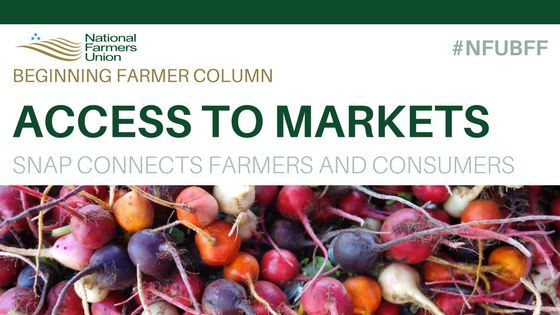 By Cathleen Anthony, Greater Rifle Improvement Team Assistant at AmeriCorps VISTA
By Cathleen Anthony, Greater Rifle Improvement Team Assistant at AmeriCorps VISTA
My winter diet cycles through a couple of staples: rice, pasta, canned beans, cereal, and potatoes. These are not my favorite foods. I eat them because they’re cheap, can be found in bulk, and stave off the feeling of hunger. When you’re on Supplemental Nutrition Assistance Program (SNAP), despite the name, nutrition often takes a backseat to cost.
In my experience, most individuals who are participants of SNAP, myself included, are self-conscious about it, sometimes even embarrassed or ashamed. There is a stigma attached to the idea that you are spending taxpayer’s dollars in order to put food on your table. The program is wonderful in that it helps disadvantaged individuals cover some of their basic necessities while also working towards bettering their life, but some of those negative connotations linger.
There are two seasons in my culinary world: farmer’s market season, and everything else. Outside of the farmer’s market season, meal preparation is bleak. But when the farmer’s market is open, ingredients are abundant, cooking is exciting, and my fridge is full.
When it isn’t farmer’s market season, I go into the grocery store with three things: a list, coupons, and my calculator. I try to strike a balance between cost and quantity, hence my habit of buying foods high in starch and carbohydrates. At the checkout, after assembling the groceries I can afford, I discreetly hand the SNAP benefits card to the cashier, hoping no one comments on it.
In comparison to my first winter on SNAP, my first farmer’s market season was phenomenal. I am not particularly good at cooking, and being on such a tight budget made things that much harder. I was elated to learn that my local farmers market not only accepts SNAP, but they also have an incentive program that double its value. I was able to get my hands on local and seasonal produce, honey, bread, cured meats, eggs, canned goods, and more.
But it wasn’t just the availability of food that helped me – it was the reception I received.
Compared to the grocery store, market vendors and volunteers are personable and invested. Since I was a regular customer, they got to know me. Upon learning how terrible I am at cooking, they offered advice and recipes. And one individual, when they learned that I was on SNAP, would add an extra tomato or apple to my bag every market, always refusing to let me pay, no matter how much I insisted.
Although it’s a valuable program, SNAP can sometimes make a person feel isolated. I don’t host social gatherings with my friends because I can’t afford to feed more than just me. I often show up at parties without a dish to share. I rarely go out to meals with other people. Food is deeply connected with our social interactions, and when you can’t afford it, your social life suffers too.
Connecting with local growers and producers through the farmers market has really helped to reignite the social aspect of food I was missing. This isn’t a large  corporation looking to obtain what meager money I have – these are individuals who live near me and want to help me as much as I want to support them. The connection between local producers and SNAP participants is symbiotic. No longer am I simply spending government funding on food; I’m supporting my local businesses and communities with it. And they have certainly helped me, because I finally get to eat something far more nutritious than rice.
corporation looking to obtain what meager money I have – these are individuals who live near me and want to help me as much as I want to support them. The connection between local producers and SNAP participants is symbiotic. No longer am I simply spending government funding on food; I’m supporting my local businesses and communities with it. And they have certainly helped me, because I finally get to eat something far more nutritious than rice.
Cathleen Anthony grew up in Maryland, studied environmental science in New York, and is currently an AmeriCorps volunteer in Rifle, Colorado. She works to help promote the City of Rifle through development and special events, encouraging investment in the local economy and helping citizens develop a sense of place. Last year she helped to run Rifle Farmers Market and organize its first Farm to Table fundraiser for the community. Her favorite fruits and veggies are brandywine tomatoes, spaghetti squash, and blueberries.
Like what you’ve read? Check out our Beginning Farmer Forum home page, and join the conversation in the Beginning Farmer Forum Facebook group.

